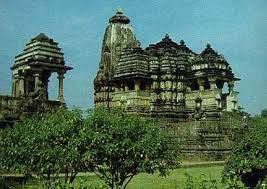Courtesy : www.rankred.com/
Green ancient Indian architecture
The natural fuel used by humans for the first time was around thousands of years ago. We all know green design, sustainable architecture and alternative energy sources are very important to create a sustainable environment. In ancient times, practical uses of different types of energy were discovered at different places. The ancient Chinese used solar power for heating and Americans used geothermal energy for cooking, similar to this, wind energy was used by Egyptians to decide the suitable place for construction. Some of the modern designs are highly inspired by these kinds of green energy. Here are few great ancient examples of green architecture and technology that shaped the whole world.
9. American Cliff Accommodations

Image via: wikimedia
The Cliff Palace is the largest cliff swelling in the North America. It is a great example of green example and located in the Mesa Verde National Park. The protection from the excessive solar heat is one of the best examples. It was constructed by the ancient Pueblo people. The whole palace was constructed of sandstone and wooden beams. The sandstone was carved using hard stones and the mixture of soil, ash and water was used to hold them together. The palace has 150 rooms and had a population of around 100 people.
8. Roman Houses Architecture

Image via: ancient
The architectural orientation of Roman houses is slightly different from Greek architecture. They believed in constructing different rooms for different purpose. They construct a winter dining room and bathrooms, facing southeastern direction to get the maximum evening light. Bedrooms have an eastern exposure to get the morning light. In the ancient Rome, Domus was a high level house occupied by the high-class people. It features many great examples of architecture which are still in use. The best example is to gather rainwater which is automatically drained into an underground basket.
7. Roman Passive Cooling System

Image via: wikimedia
During the hot weather, they take out the stored water from the underground chambers and fill the pool. They left it for evaporation that provides a cooling effect to the entire atrium. It reduces the temperature and adds extra moisture in the air. This method was also used during the era of ancient Egypt. The whole process of collecting rainwater was very important to provide water for household and other uses.
6. Roman Gravity Aqueducts

Image via: wikimedia
Rome is popular for colossal and many other great examples of ancient engineering. But the most important was their water and waste distributing system and aqueducts and some are still in use today. These aqueducts are considered as a source of renewable water power for mines, mills and baths. They constructed aqueducts to bring fresh water to towns. This system was smartly designed to take out the sewage water into the nearby water bodies to keep the town clean and waste free.
5. Jerusalem Gray Water Plumbing

Image via: greenprophet
The capital city of Israel, Jerusalem is situated 2500 feet above the sea level. Due to high elevation, the city always depends on underground water. This city is well known for the architecture of the water reusing system. They developed several tunnels to reverse the sink water in basins and later used it for gardening and other purposes. The city still has a tunneling system. Along with the development of the city, the water reuse system was also developed.
4. Ancient Persian Wind Towers

Image via: kuriositas
Persia is considered the home of the oldest ventilation and cooling systems. It is believed that this technology was as old as 2000 years. They created a narrow path and called them windcatcher. It can be uni-directional, bi-directional or multi-directional. The hot air passes through these narrow passages and mix with underground cold water. It helps to regulate room temperature during a hot burning day. These towers are excellent examples of ancient Persian desert architecture. This technology is still utilized in western architecture.
Read: 13 Futuristic and Innovative Electric Vehicles
3. Roman Thermal Baths

The geothermal energy has been used for bathing by the humans from the Paleolithic age. During the ancient Roman times, geothermal energy is used for heating space. The oldest known spa is located in China which was built in 3rd century BC. Later, Roman developed the use of thermal energy for public baths. At that time, these baths were limited and only built at places where hot magma was closer to the earth’s surface. Now thermal energy is widely used for electricity generation.
2. Ancient Greek Cities

Image via: britannica
Architecture plays an important role in designing a house to keep it warm without the use of any fuel. When the ancient Greek faced the shortage of fuel for the winter season, they started to think about the use of green energy. They construct the entire city in a way to capture the maximum sun rays during the cold season of the year. Later, they start using glass in the windows to retain maximum heat from the sunlight.




